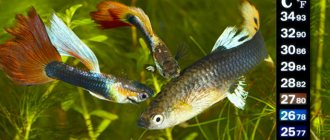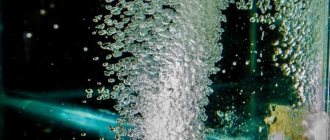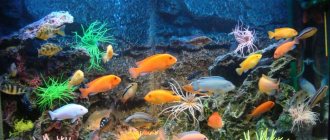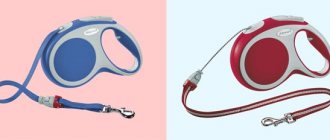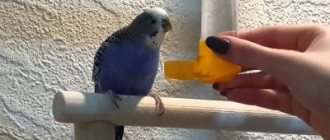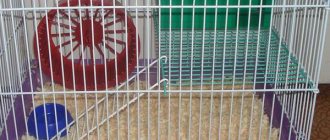When starting their first artificial pond, novice fish keepers are wondering whether a compressor is needed in an aquarium, and whether it is possible to do without this device. You can answer this question by understanding what an aquarium compressor is and how it works. Keeping fish in home containers requires an environment saturated with oxygen - exactly what a compressor is needed for, because this device is designed to fill the liquid with oxygen. There are different types of compressors, so before choosing the best model, you should familiarize yourself with the characteristics and detailed description of the design.
What is the need for a compressor?
Before you purchase any equipment for supplying oxygen to an aquarium, you should understand why the device is needed and how it works. The main principle by which experienced pond owners are guided is the safety and comfort of small inhabitants, therefore the purchase of any device should be made in the interests of fish, plants and shellfish.
As you know, the life of the inhabitants of the underwater depths without air is unthinkable, so the aquarium liquid must contain oxygen. The compressor in the aquarium copes with this task perfectly, filling the water with oxygen, which is the answer to the question: why do you need a compressor in the aquarium?
Of course, if there is a large amount of underwater flora, some aquarists may have doubts about the need for the device. After all, plants are also known for enriching the aquatic environment with oxygen, but this volume is not enough for fish to fully develop. In addition, many strange species of fish are capricious about this issue, and if there is a lack of oxygen, they get sick or die.
In addition to supplying air, compressors in aquariums create oxygen flows - aeration, which mixes the layers, preventing the liquid from dying out. Otherwise, an unpleasant film will form in a reservoir with an unshakable water mass, which will definitely ruin the appearance.
Why is it needed?
Inexperienced owners are confident that the amount of oxygen released by plants is sufficient for a comfortable life for the inhabitants. Algae produce O2, but in small quantities, which is not enough for large-volume containers.
The formation of the aquatic ecosystem is negatively affected by:
- fish excrement;
- rotten particles of food at the bottom;
- lack of oxygen has a bad effect on the formation of the aquatic ecosystem.
Exotic fish species are picky about their living conditions, so the lack of sufficient air can lead to illness or even death. Also, standing water is subject to the formation of a film on its surface. The air flows supplied by the compressor enrich the tank with oxygen, which is necessary for the healthy development of the inhabitants. This process is called aeration (supplying air into the aquarium). All water layers are mixed together, so the reservoir does not look like a swamp.
How does it work
The principle of operation of a compressor in an aquarium is clear even to those who do not understand instruments. The device captures air from the environment and delivers oxygen inside the tank using tubes or hoses, the ends of which are lowered deep into the tank. At the ends of the hoses there are nozzles, thanks to which the air comes out in the form of tiny bubbles.
Tiny oxygen bubbles, in turn, rushing to the surface, mix the liquid in the tank, preventing the water from stagnating. And in combination with additional color lighting, the flow of bubbles not only benefits little residents, but also looks fantastically beautiful. In addition to standard compressors for aquariums, models have been developed that include a filter - pump. They can be external or internal, but the second type is more popular. The point is cost - by purchasing a submersible compressor, you can save a lot of money.
Exploitation
This device belongs to the category of bought and for a long time. But in order for the device to serve for a long time, it is necessary to properly monitor it:
- Cooling. Only a correctly installed device will not overheat. If the temperature is higher than the permitted norm, it should be taken to a workshop or repaired yourself;
- Read the operating instructions for the aerator. It is recommended to disconnect the device from the power supply at night. This is to ensure that the device has the opportunity to “rest”. And this has a positive effect on its service life.
- There are models that it is not recommended to turn off often, but rather leave them on and they always work. The moment of rest for such aerators is the time when cleaning and changing the water in the vessel is performed. If the device is turned off, you need to keep an eye on the aquatic inhabitants.
- Regardless of the model, the devices should be cleaned. Because it will begin to poorly saturate the water with oxygen.
And in conclusion, is a compressor needed in an aquarium? Yes, it is. But the choice of a compressor for an aquarium, what model, and what parameters to pay attention to when purchasing are determined based on the volume of the vessel, the number of inhabitants and the presence of algae, and on the financial capabilities of the aquarist. But the main thing is to remember the saying “he who is stingy pays double!”
Types of regulation
The aquarium compressor is divided into two types according to the adjustment method:
- Adjustable.
- Unregulated.
In adjustable models, the structure of the device includes a regulator, by rotating which the owner can change the power and the supply of oxygen bubbles to the tank. In turn, adjustable models are divided into the following types:
- A device with an electronic type of regulation works by limiting the stroke of the membranes, but has a drawback: when turned on for a long time, the device gets very hot.
- The essence of the mechanical type of work is that the oscillations of the membranes are limited by magnets or claws.
- Shutting off the valve - if you close the outlet valve located on the hose, you can control the supply of oxygen to the artificial reservoir.
In addition to adjustable ones, there are devices with no regulation - devices that are not equipped with additional elements to control the air supply. In other words, it is impossible to change the flow intensity, as well as the noise emitted by the device. In addition, such models consume a lot of electricity, so some aquarists build silent aquarium compressors with their own hands, using a cooler and special taps.
If you already have a compressor that does not meet your needs
Step 1. Using timing, we experimentally determine the smallest value t - the time (seconds) during which the pressure in the receiver drops from maximum to minimum (the time between stopping and turning on the compressor).
Step 2. We calculate the actual air consumption using the formula: G = 60 V DP / t Kpr, V - receiver volume (l); DP - pressure adjustment range in the receiver (min. value - 2 bar); Kpr is the performance coefficient of the compressor head (for single-stage - 0.65, for two-stage - 0.75).
Step 3. Using the data obtained, we recalculate the characteristics of the compressor according to the methodology.
Types of devices
The types of compressors are as follows:
- Membrane compressor in an aquarium - the operating principle of a membrane device is slightly different from the variety described above. Air flows enter inside from a chamber connected to the membrane, and due to the oscillations, a pressure surge occurs, which is an impetus for the supply of air bubbles. The undoubted advantage of representatives of this type is the affordable price, however, the device also has imperfections: low power and loud noise. For those who want a silent compressor for an aquarium, this model is not suitable.
- Piston compressor for an aquarium - the operating principle of the device is based on the movements of the piston, due to which air flows. The advantage of this type is that it is a quiet aquarium compressor that makes very little noise. A similar model would be appropriate in a guest room or bedroom so as not to disturb the owner’s sleep. Among the disadvantages, it is worth noting the high cost and high energy consumption.
If an aquarist is confused by the cost of piston devices, but the owner dreams of acquiring low-noise compressors, you can purchase two devices of different types. The membrane model, which makes loud noise, is turned on during the day, and the piston model is connected at night in order to sleep peacefully.
In addition to these types, stores offer a mini-compressor for an aquarium, which operates using alkaline batteries. The device has low power, but due to its compactness, the device is convenient to take with you for transporting pets, or to use the device when the lights in the house are turned off.
Adjustable
According to one classification, a compressor for fish can be unregulated or adjustable. In the latter case, the front or side panel of the device housing has a special regulator. By rotating it, you can influence the performance of the compressor, thereby changing the number of bubbles. This increases or decreases the intensity of aeration. An adjustable air compressor can have different types of regulation:
- Electronic. It limits the movement of membranes. The disadvantage is that the electronic part is subject to heating.
- Mechanical. The vibrations of the membranes are limited by the claws or the magnets are moved away from the coil inside the aquarium compressor itself.
- Blocking the output channel. More common option. In this case, the valve located at the transition from the air duct to the sprayer is closed.
How to choose power
The choice of compressor for an aquarium depends on the dimensions of the tank for which the device is purchased. For miniature containers with a capacity of up to 100 liters, you can buy a device with a capacity of 80 liters per hour. If the tank size exceeds 100 liters, then a powerful compressor for the aquarium is required - up to 240 l/hour. The height of the artificial reservoir is considered important when choosing: the higher the structure, the better quality aerator is needed to saturate the aquatic environment with air masses.
Duration of work
The number of hours that the tank aerator will operate depends on the population and the size of the glass fish house. If there are a small number of pets in the aquarium, then you should not leave the device working around the clock; in addition, there are species of fish that do not require constant aeration.
You can determine the exact operating time of the device by learning about the preferences of a particular type of fish and by observing the behavior of your pets: if the fish rise to the surface of the water surface, then the pets do not have enough air. It is important to note that a lack of oxygen can have a detrimental effect on the health of the fish, and even take the life of their wards.
We take into account the details
The following factors must be taken into account:
- dimensions and shape of your aquarium;
- population of fish and snails;
- presence of algae in the aquarium;
- decorating elements.
The numerical characteristics of the water surface depend on the dimensions of your aquarium. The larger the space, the better the exchange of gases between living organisms and the external environment. In this case, the fish have excellent conditions for life, and the compressor also additionally regulates the oxygen supply.
Thus, it is always recommended to have, if not a huge, then a much larger aquarium
than is required for the number of free-swimming fish. The larger the tank's capacity, the less likely it is that your pets will experience oxygen deprivation at night if you plan to turn off the oxygen supply compressor. Try to avoid crowding in the aquarium by any means - remove growing plants, purchase a larger aquarium.
And if there is an overpopulation of fish, then remove them from the existing composition, leaving only the normalized number of individuals.
Based on everything described above, we can conclude that additional aeration can only be turned off in a spacious aquarium with a small population of algae and living creatures.
The next morning you can always determine for sure whether you made a mistake by turning off the compressor. If it is obvious that the fish have a lack of oxygen, do not allow the aeration to be turned off.
Remember about plants that consume oxygen at night - if there are a lot of them, they will “take” oxygen from the fish at night, complicating their breathing process.
If you take into account all the above factors and do not miss important points that lead to the death of fish, then the additional air supply can be turned off at night. In other cases, the compressor must
work constantly
.
You will learn whether it is possible to turn off the compressor in an aquarium at night from the following video.
How to install
For the health and safety of the little inhabitants of the tank, it is important not only to choose the right model, but also to know how to install a compressor in the aquarium. If the device is connected incorrectly, this can lead to many dire consequences.
How to install a compressor in an aquarium:
- First you need to choose a place where the aerator will be located. You can place the device inside the fish container, on the lid, or in the bedside table on which the container rests. If you install the aerator in a container or cabinet with sound insulation, the hum can be avoided.
- The aerator is installed, depending on the manufacturer’s recommendations, on the surface, partially or completely immersed in the aquarium liquid. If the latter option is used, a check valve is required.
- A heater is installed not far from the aerator. This will help mix cool water with warm water faster and equalize the temperature.
- Once you have completed the installation, it is important not to forget to take care of the compressor: clean it regularly and remove dirt. Otherwise, the aerator will not last long.
Installation
Once it has been determined which compressor to purchase, you should decide how to install the compressor in the aquarium. Before the installation process, you need to decide where it will be installed - above the surface of the water or in a vessel with water, in a special box. When installing a compressor in an aquarium, you must also take into account that it should be cleaned. The appliance may make noise when operating. If possible, you should buy silent devices.
Noise is a factor that is important if there is a small child in the family. But it’s not always affordable to buy a silent compressor for an aquarium. You can reduce the noise level. If the cause of the noise is friction with the wall of the vessel, then you need to place a clean sponge (kitchen sponge) that will “absorb” a little noise. Specialists create special boxes for the compressor. Also, the noise could be a dirty membrane that needs to be cleaned, and you will get a silent compressor for the aquarium. You can only disassemble the device if you know how to do it.
There is no algorithm or requirements when installing a compressor in an aquarium. The main thing is to check that it is on a flat surface. Since on a slope it can slide off the surface.
The best option is a quiet compressor for an aquarium that will not create noise.
DIY assembly
Considering that prices for high-quality aerators are high, aquarists with skilled hands often assemble an aquarium compressor with their own hands. It should be warned that without experience in such work and knowledge, there is no need to take risks by assembling a homemade device at home, since there is a high risk of the device shorting or breaking.
How to assemble a compressor for an aquarium:
- The construction will require a compact electric heater, which is connected to the network. The power of the device should be up to 12 Volts; it is preferable to choose silicone hoses.
- After connecting, an eccentric is attached to the motor, which will be needed to move the pump. In this case, the device will be able to supply air to the tank while simultaneously providing mixing of the liquid.
The advantage of a homemade aerator assembled according to the above instructions is the absence of noise. Installation is carried out from the outside, fixing it to the surface of the container or placing it nearby.
Why turn it off?
Turning off the compressor at night can have various reasons - the owner wants to save energy or does not consider it necessary to operate it at night, believing that the fish are sleeping.
However, you must understand that any pets come with various expenses, so even before purchasing animals, you need to think about whether you are ready for additional expenses for living creatures. Fish need their own aquarium, additional lighting and aeration, food and plants that make their daytime existence easier.
Alternative to a compressor
A convenient oxidizer is considered an alternative replacement for a compressor. This is a homemade device that combines the functions of a filter and an aerator. The advantages of the device include the fact that the oxidizer does not need to be connected to the network, and it is completely silent - not a sound is heard during operation.
The principle of operation of the oxidizer is to perform a chemical reaction, which is produced by hydrogen peroxide, and the catalyst is metals. As a result of the reaction, the oxidizer releases air into the aquatic environment, which is so necessary for fish and plants.
Piston
The operating principle of this type of compressor is based on the movement of a piston that pushes out air. Rotational movements of the shaft are converted into oscillatory ones. This leads to achieving the required air supply power. If your fish live in a bedroom or recreation room, then a piston compressor for an aquarium would be ideal. It doesn't make as much noise, but it's not as cheap as a membrane one. You can use both types of compressors at once. Turn on the piston at night, and the membrane during the day. The latter consumes less energy.
The main advantages of a piston compressor:
- durable;
- almost silent;
- high performance;
- Suitable for large aquariums.
Main disadvantages:
- consumes a lot of electricity;
- expensive.
Advice from experienced owners
To avoid unforeseen situations, experienced fish holders recommend the following to beginners in the field of aquarium keeping:
- Replace compressor components, taking into account natural wear and tear.
- With prolonged use, the device becomes more quickly contaminated, as a result of which the holes become clogged and oxygen is supplied in insufficient quantities. You can eliminate the problem by thoroughly cleaning the device.
- The aerator hoses or tubes are periodically checked for leaks.
- In order not to risk the well-being of the fish, experienced water enthusiasts recommend keeping a spare mini-aerator in case of breakdown.
An aquarium compressor is a convenient device designed to preserve and protect the life of fish and shellfish at home. Thanks to the use of an aerator, aquarists can admire colorful fish and lush green plants in their own pond every day.




